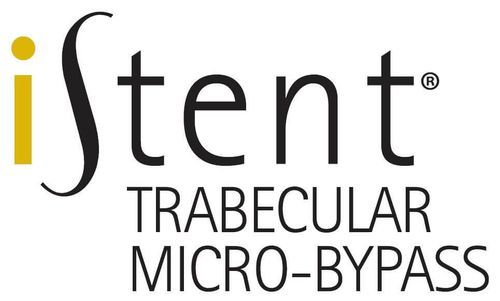Glaucoma

Glaucoma is a group of eye diseases that can cause vision loss by damaging the optic nerve, which is the nerve that carries visual information from the eye to the brain. It is often associated with increased pressure inside the eye, known as intraocular pressure or IOP.
Early detection and treatment are crucial in preventing vision loss from glaucoma. At Central Florida Eye Specialists, our experienced eye doctors are dedicated to providing comprehensive care for patients with glaucoma.
What is Glaucoma?
Glaucoma is a progressive eye condition that damages the optic nerve, which is responsible for transmitting visual information from the eye to the brain. The damage is usually caused by increased pressure within the eye, known as intraocular pressure.
When left untreated, glaucoma can lead to permanent vision loss. However, with early detection and proper treatment, it is possible to slow or prevent further vision loss.
What Are The Different Types of Glaucoma?
There are several types of glaucoma. Two important ones to know are open-angle glaucoma and angle-closure glaucoma.
Open-Angle Glaucoma
Open-angle glaucoma is the most common form of the glaucoma. It occurs when the drainage channels in the eye become gradually clogged over time, causing an increase in intraocular pressure.
This type of glaucoma develops slowly and often has no noticeable symptoms in the early stages. As the condition progresses, you may experience peripheral vision loss, which can eventually lead to central vision loss if left untreated.
Narrow-Angle or Angle-Closure Glaucoma
Narrow-angle glaucoma is a condition in which the drainage angle between the iris and the cornea is narrower than normal, putting the eye at risk for developing angle-closure glaucoma. In narrow-angle glaucoma, the outflow of fluid from the eye is not yet blocked, but the narrowing of the angle can lead to increased intraocular pressure over time.
If left untreated, narrow-angle glaucoma can progress to angle-closure glaucoma, a more severe condition that occurs when the drainage angle becomes completely blocked. This blockage causes a rapid increase in intraocular pressure, which can lead to severe eye pain, headaches, nausea, and vomiting.
Angle-closure glaucoma is a medical emergency and requires immediate treatment to prevent permanent vision loss.
Treatment from a Glaucoma Specialist

The goal of glaucoma treatment is to lower intraocular pressure and prevent further damage to the optic nerve. Treatment options depend on the type and severity of glaucoma and may include eye drops, laser procedures, minimally invasive glaucoma surgeries (MIGS), or traditional glaucoma surgery.
Prescription Eye Drops
Eye drops are often the first line of treatment for glaucoma. They work by either reducing the production of fluid in the eye or improving the outflow of fluid from the eye, thereby lowering intraocular pressure.
Some people may need to use one or more types of eye drops to effectively manage their glaucoma.
Laser Procedures
Laser procedures are non-invasive treatments that can help lower intraocular pressure in patients with glaucoma. At Central Florida Eye Specialists, we offer two main types of laser procedures:
Selective Laser Trabeculoplasty (SLT)
SLT is a laser procedure that targets the trabecular meshwork, the drainage tissue in the eye, to improve fluid outflow and lower intraocular pressure. It is often used as a first-line treatment for open-angle glaucoma or as an adjunct to eye drops.
Laser Peripheral Iridotomy (LPI)
LPI is a laser procedure used to treat angle-closure glaucoma. During the procedure, a small hole is created in the iris to allow fluid to flow more freely and reduce the risk of a sudden increase in intraocular pressure.
MIGS
Minimally Invasive Glaucoma Surgeries (MIGS) are surgical procedures that involve the implantation of small devices or the use of specialized instruments to improve fluid drainage and lower intraocular pressure. These procedures are less invasive than traditional glaucoma surgeries and often have a faster recovery time.
At Central Florida Eye Specialists, we offer several MIGS procedures, including:
iStent inject W
The iStent inject W is a small, minimally invasive device used to treat mild to moderate primary open-angle glaucoma in adults undergoing cataract surgery. By implanting two tiny titanium stents into the eye’s natural drainage pathway, the iStent inject W improves fluid outflow and lowers eye pressure, effectively managing glaucoma while maintaining a safety profile similar to cataract surgery alone.

Kahook Dual Blade (KDB)
The Kahook Dual Blade is a single-use, ophthalmic blade designed to remove a portion of the trabecular meshwork, improving fluid outflow and lowering intraocular pressure.
Hydrus Microstent
The Hydrus Microstent is a small, flexible device that is implanted into the Schlemm’s canal, a drainage channel in the eye, to improve fluid outflow and reduce intraocular pressure.
Glaucoma Surgery
In cases where eye drops, laser procedures, and MIGS are not sufficient to control intraocular pressure, traditional glaucoma surgeries may be necessary. These surgeries aim to create a new drainage channel for fluid to flow out of the eye, lowering intraocular pressure.
At Central Florida Eye Specialists, we are also participating in the CREST study, which focuses on a new glaucoma treatment called the CycloPen Micro-Interventional System. This innovative procedure aims to lower intraocular pressure in patients with open-angle glaucoma by reducing the production of fluid in the eye.
Your Partner in Preserving Your Vision

At Central Florida Eye Specialists, our experienced eye doctors work closely with each patient to develop a personalized treatment plan based on their specific type of glaucoma, severity of the condition, and individual needs. We are committed to providing the highest quality of care and utilizing the latest advancements in glaucoma treatment to help our patients preserve their vision and maintain their quality of life.
If you are concerned about glaucoma or have been diagnosed with the disease, schedule an appointment with one of our glaucoma specialists at Central Florida Eye Specialists. Early detection and treatment are key to preventing vision loss from glaucoma, and our team is here to support you every step of the way.




